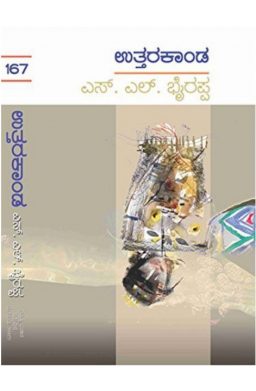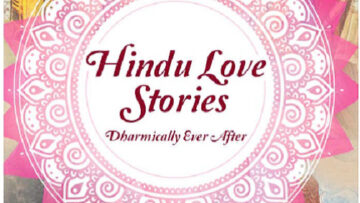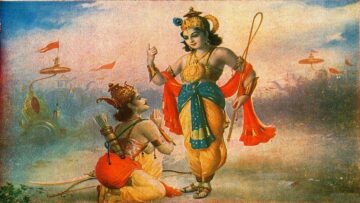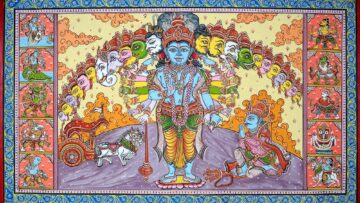Dr. S. L. Bhyrappa is Kannada’s most popular writer. Indeed, Aravind Adiga goes so far as to call Dr. Bhyrappa the greatest storyteller of our times. There can be little doubt that Dr. Bhyrappa is a great story teller: in a literary career spanning 60 years, this prolific writer has written 26 novels, 6 collections of literary criticism/essays and an autobiography; all his works have been translated into several languages, with a few having the distinction of being translated into every Indian language. Many of the translations are bestsellers in other languages such as Marathi, Telugu etc., All his books have seen multiple reprints, with some seeing over 10 reprints. Even his early novels such as Bheemakaaya and Vamshavriksha are popular to this day, and are reprinted every couple of years. Several of his books have been adapted into plays, serials and award-winning movies.
Dr. Bhyrappa has also been feted with several awards, including the Saraswati Samman, Moortidevi Puraskar and the Sahitya Akademi Award. That said, Dr. Bhyrappa is more a story teller than a litterateur: his works do not have poetic, or even literary beauty; the language is one of everyday rustic/colloquial usage; he uses fragmentary sentences and long, convoluted sentences, as we do in day to day speech. Yet, what shines through is the story itself. A good story does not need embellishments and Dr. Bhyrappa’s stories prove that.
Dr. Bhyrappa is no stranger to the epics: Parva, one of his most celebrated novels, explores the Mahabharata through the eyes of its various characters, both primary and fringe. Thus, Shalya gets as much of a voice as does Arjuna. In Parva, Dr. Bhyrappa stripped the epic of divinity and the miraculous, giving it an everyday realistic feel, where the characters are as real life as you and I, with similar emotions, motives and fears. Reading Parva was like stepping behind the scenes of a movie, seeing the sets, the pain, the exhaustion, and the boredom behind the glamorous on-screen visage.
It was therefore no surprise that something similar was expected of Uttarakaanda, Dr. Bhyrappa’s novel based on the Ramayana, published in 2016/17. In Uttarakaanda too, Dr. Bhyrappa strips away the divine, the glamour and romanticism of the epic, where the key characters have to grapple with such basic and practical problems as what to wear when the bark clothes get wet in the rain? how to cook without utensils? how to transport their belongings, meagre as they are, while travelling in the forest? Dr. Bhyrappa provides plausible solutions to these, a bit stretched though they may be.
To pass judgement on the Uttarakaanda however, is not an easy task. Many friends, who are fans of Dr. Bhyrappa, have been frustrated and disappointed with Uttarakaanda, and have given up the book mid-way. This is understandable. However, to do justice, one has to read the book till the end. And that is where the book surprises and the genius of Dr. Bhyrappa stands out. This review therefore, looks at the book in two sections: the first 300 pages and then the last 30 pages. The best as always, is reserved for the end.
The first 300 pages narrate the story of the first six cantos of the Ramayana, and also the first part of the banishment of Sita into exile. Here, Dr. Bhyrappa peels away at the palace intrigue that resulted in Rama’s exile. Though Kaikeyi and her countrymen have been vilified (excessively, in my opinion), Dr. Bhyrappa offers a very plausible explanation for Bharata rejecting the throne. We have to remember that Dr. Bhyrappa’s characters, be it Rama or Sita or Bharata, are not exemplary human beings of high idealistic character. Dr. Bhyrappa’s Bharata rejects the throne because he is not sure of his own abilities to administer the kingdom. Of course, Bharata has been shown as an inveterate gambler, which does not in any way add to the narrative, but some literary latitude is excusable.
What is not excusable is the portrayal of women. This is that much more shocking, for we have seen such strong characters emerge from his pen as Katyayini (Vamshavriksha), Lakshmi (Aavarana), Rangalakshmi (Matadaana), Venkatalakshmi (Naayi Neralu), to name a few. Thus, Ahalya, who stands tall in Valmiki Ramayana, is reduced to the status of a common whore who sleeps with a local chieftain for gold; Kaikeyi and Tara are excessively scheming, with Tara even keeping Sugriva intoxicated with wine and women to usurp administrative control; Ruma labelled dumb. The scene of Shurpanakha attempting to seduce Rama and being punished by Lakshmana reads like cheap bazaar porn. Even Sita, whose view-point the book is supposed to be, is whiny for the most part. Slotting all women into either the “goody good” category or promiscuous, manipulative, domineering is not only disappointing, but a lost opportunity as well. It is surprising that the author who could create a nuanced female character like Katyayini, portrays all women as having a weakness for gold. I only wish that we could have seen a Katyayini like character emerge from an Ahalya, a Tara, a Kaikeyi and even Shurpanakha. Unfortunately, that is not to be and this is my biggest complaint with the book.
Some passages may appear repetitive, like the explanations for the mundane, day to day activities like growing food, cooking, transporting the meagre belongings etc., Ignore the repetition, and a world of practical questions opens up: what did they do when their bark clothes got wet in the rain? They left Ayodhya with nothing but their weapons and the bark clothes they were wearing, so how did they cook? How did they get the implements to build a hut? To appreciate these, it is necessary to suspend the fascination for the miraculous and the romanticism; otherwise, these passages are sure to appear grating.
The episode of Sita’s suffering, in the face of relentless physical, mental and emotional torture from Ravana and his rakshasi guards, is spiritless and bland. The mental fortitude and strength of will, with which Sita faced the rakshasa hordes, is completely absent. Instead, we find Ravana marching in frequently, offering various inducements. Yes, only inducements, no threats. And Surama, Vibheeshana’s “goody” wife, meeting Sita clandestinely offering her moral support and succour. Sita was imprisoned in the Ashokavana, for a full year, and she was alone. What kind of emotional turmoil did she go through? What were her thoughts? How did she think of Rama in those weeks and months? Wherefrom did she find the fortitude and strength of will to resist a demon like Ravana? This could have given us an opportunity to understand Sita better. Unfortunately, that opportunity is squandered, which is disappointing in a book that purports to be Sita’s story.
There are some good moments before and after the agni-pravesha. Rama rejects Sita and tells her to go seek the shelter of anyone but he. After a very brief verbal exchange, Sita straightaway decides to enter the fire. Before she can enter the fire, Lakshmana comes to her rescue, has some (harsh) words with Rama and forces Rama to accept Sita, take her hand in his, and circum-ambulate the pyre that Sita has lit to enter. A bit fanciful, but still acceptable.
This is not to say that the book is without its finer moments, of which there are a few, though fewer than expected from a writer of Dr. Bhyrappa’s calibre. A couple of them are worth mention. One is Dr. Bhyrappa’s explanation for Bharata rejecting the throne, which has been mentioned earlier. The second interesting observation is Dasharatha’s lament that while he fulfilled the promise to Kaikeyi, he failed in his promise to the citizenry and aristocracy of Ayodhya – to whom he had declared that Rama would be the heir apparent. This is something that is rather obvious, but very few have pointed it out as starkly as Dr. Bhyrappa has.
Now we come to the second part of the book – the last 30 pages. It is in the last 30 pages that the book shines through brilliantly, and how! Indeed, the disappointments of the first 300 pages are washed away by the sheer brilliance of the last 30. This is the part where Rama and Sita come face to face with each other again, after Sita’s banishment from Ayodhya. Lava and Kusha are grown up youth, having gained some knowledge of arms from a disciple of Vishwamitra. Rama’s ashwamedha horse wanders into their patch of agricultural land, trampling and destroying standing crop. To punish the truant horse, the twins capture and tie it up. The soldiers searching for the horse are rather amused at two whit boys capturing the yagya horse and tell them to release it. The twins throw a challenge that since they have captured the horse, their king should fight them for its release. If he wins, they will submit to him; if he loses, by the dharma of the yagya they will get his kingdom. Hearing this, Sita intervenes and the soldiers recognise her. They request her to speak sense into the children. Sita is worried for their safety: a Rama, hell bent on following dharma, will not hesitate to fight the children, and even kill them, knowing full well they are his. By now, Shatrughna has arrived. He realises the predicament. He goes back to Ayodhya, with Valmiki. First, the twins are summoned. After a few days, Sita is summoned.
The mother in Sita worries if her children, taken by the grandeur and luxuries of the palace, have agreed to stay with their father? In the palace court, there is a debate raging to resolve the situation. The conclusion is this: the twins, by capturing the yagya horse have demonstrated their valour. Since they are the sons of Rama, who is conducting the ashwamedha, he should crown them yuvaraja, and they should then accompany the yagya horse. This sounds satisfactory to everyone.
And this is where Dr. Bhyrappa’s brilliance blazes. Sita declares NO. To everyone’s shock, she says that Lava and Kusha are not the sons of Rama. The court is flabbergasted. She explains that when Rama abandoned her, she was pregnant with the twins; by abandoning her, he has abandoned them as well. By that act, he has abandoned his right as father. Therefore, he is NOT their father! She goes a step further. She says that by capturing the horse, the twins have challenged his sovereignty. He should, as per the rules, face them in battle. If they win, they will rule, not in the name of the line of Ikshwaku, but will establish their own line! The kingdom, she declares, is not theirs by paternal right and they will secure it by strength of arms. The twins agree, for they are boiling with anger, at the injustice meted out to their mother by Rama.
The courtiers are in a quandary, as is Rama. Rama explains why he abandoned Sita: when he came back to Ayodhya, the kingdom was in a mess, with the regent absent from the capital (Bharata was administering from Nandigrama). Dr. Bhyrappa has also taken a position that Bharata was not very competent (the reason he rejected the crown in the first place). Therefore, crooks were having a field day, with crime and corruption rampant. Once Rama assumes kingship, he tried to restore order. The crooks and corrupt, unable to stomach this, figure the easiest way to put a question mark on Rama’s forthrightness is by questioning the fidelity of his wife, a soft and easy target. Lakshmana advises that the gossipmongers should be hanged. Rama realises that brute force can only subdue such talk but not weed out the undesirable elements. The only way, he reckons is by making exemplary sacrifices and being an exemplary king, with very, very high morals. The only solution was to banish Sita.
This sounds logical, and one is tempted to accept this (though how this will weed away undesirable elements who will stop at nothing is not clear). But Sita’s rebuttal sweeps away any such thought. “What,” she asks Rama, “prompted you to cast aspersions on my fidelity in Lanka, even though everyone, Vibhishana’s wife, Hanuman and others included, attested to it?” Rama’s reply is feeble: the fatigue of the search and the war, the wanton loss of life, frustration and also anger, that all this was caused by Sita insisting on him getting the golden deer for her. He was not in a proper frame of mind, he says, and therefore ended up saying things that were harsh and something he would not have said ever.
Really? Was he so frustrated and angry that he did not even stop his wife from entering the fire, which would have surely burnt her to death? Dr. Bhyrappa makes us wonder. Indeed, Rama’s defence is weak and unconvincing, and the author demonstrates that. In any case, Sita refuses to go back to Rama, though he says that he stayed true to his ekam-patni-vrata and to this day, sits on the throne with a golden image of her next to him. The elders ask Sita to take some time and think about this. The twins in the meanwhile, are to stay back in Ayodhya.
Back in her hut, Sita introspects. “If there was no other way”, she wonders, “why did he abandon me? Why did he not abandon the kingdom?” She realises, that everyone does things for themselves. Dr. Bhyrappa quotes some verses from the Brhadarankya Upanishad, which state to the effect that, a husband loves his wife not because she is his wife, but because he is the husband; the wife loves him because she is the wife; a parent loves the child because he/she is the parent and not because it is the child. The essence is that happiness and love, are centred inside oneself and not outside. Thus, all that Rama did, was for himself, as was what she, Sita, did was for herself. This realisation gives her peace.
She resolutely refuses to go back, but agrees to the twins’ staying back and training for their future responsibilities. The twins, however, are still angry at Rama and refuse to learn from him. Lakshmana is roped in for the purpose. With Sita gone, now forever, Rama loses interest in everything. He crowns Kusha as the yuvaraja and appoints Lakshmana as regent. He retires to his chambers and one day, drowns in the Sarayu. No one is sure if it was an accident or suicide or iccha-mrityu.
Sita is driven to grief. She is surprised that though she had (or so she thought) given up Rama, why is her heart grieving. She dresses up in all her finery, and lays down in a furrow in the earth that she has ploughed. Her loyal servants find her dead the next morning. Valmiki arrives, examines her pulse, declares that it is iccha-mrutyu and says that she should be buried, not cremated. She who came from the soil, went back to it.
The last 30 pages make up for the lackadaisical first 300. Yet, the cutting insight of Dr. Bhyrappa’s Vamshavriksha that delves into the psyche of every key character, particularly its women, is sorely missing in Uttarakaanda.
To truly enjoy the book, one will have to linger a while on the truly mention-worthy insights and ignore the drawbacks. In conclusion, though Sita narrates the story, it is not Sita’s story. It is simply Ramayana narrated by Sita; not Ramayana with Sita’s viewpoint. The narration also suffers from a complete lack of emotion, which readers of Dr. Bhyrappa’s recent works will not find surprising. Yet, inspite of its several drawbacks, Uttarakaanda is an important addition to the corpus of Ramayana literature, not only for current times, but for times to come. The voice of Sita in the climax is the voice of an independent woman: free, fearless, unabashed. It is the voice of a woman that puts herself first, before any other person, though that other person be Rama himself. This Sita is a signpost of the current times when, after centuries of subordinating their will to others, women put their self-respect first; women stood up, asserting themselves as not only the fairer sex but the better sex. This, is the biggest achievement of the book and one that makes reading 300 plus pages worthwhile. In conclusion, it is rather clear that though the speaker is Sita, it is not her voice: the voice of Dr. Bhyrappa’s Uttarakanda is that of a man. And that, is the biggest undoing of this book.
S. L. Bhyrappa’s Uttarakanda is available for purchase here.
Disclaimer: The opinions expressed in this article belong to the author. Indic Today is neither responsible nor liable for the accuracy, completeness, suitability, or validity of any information in the article.











